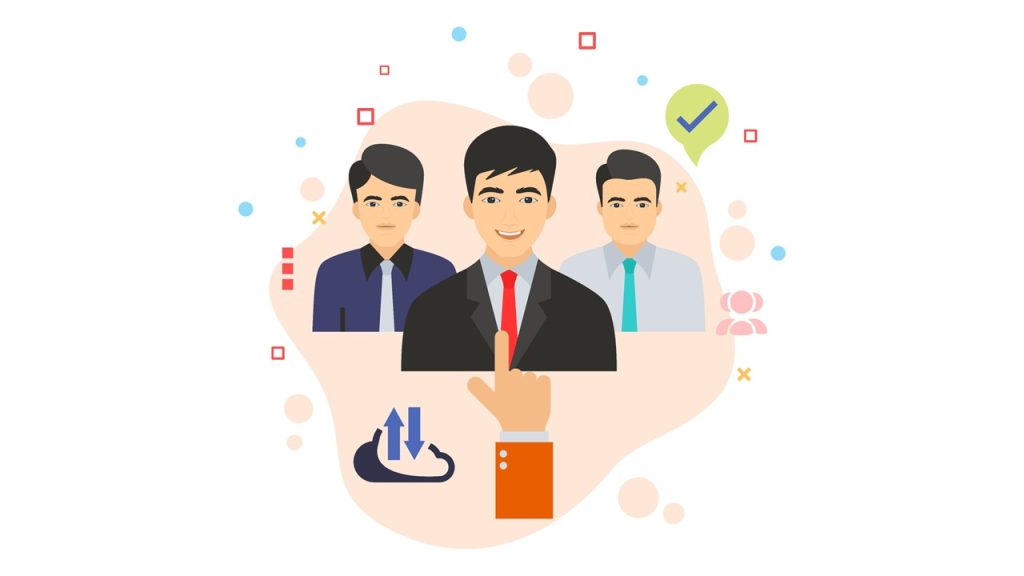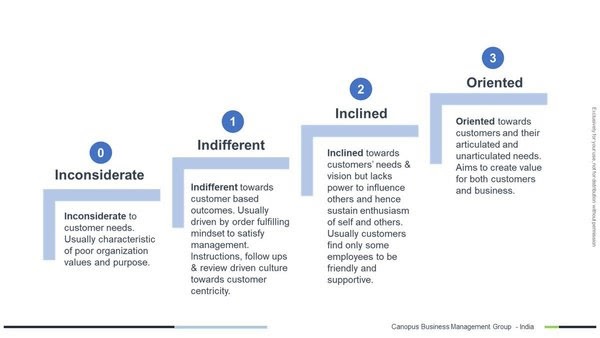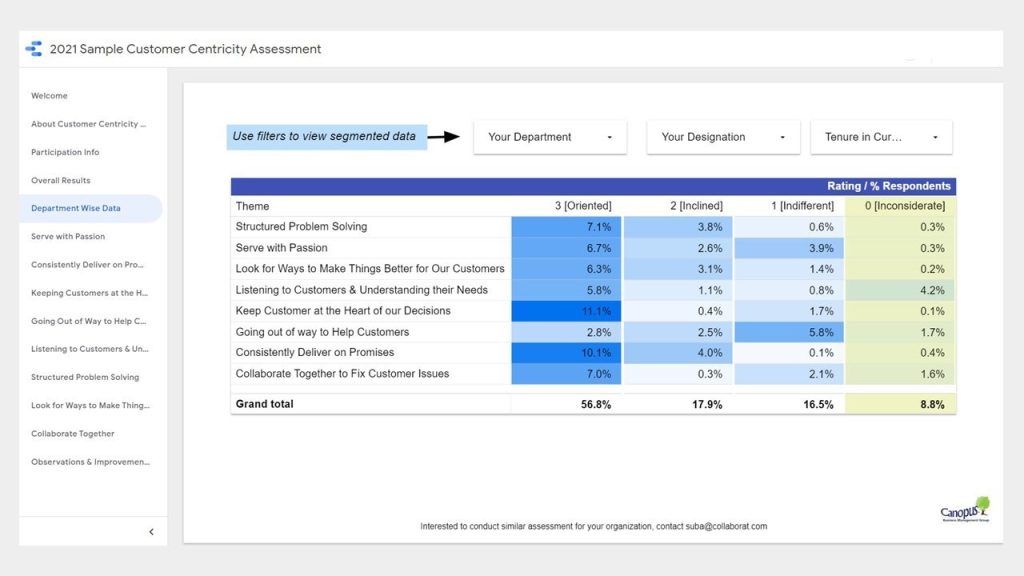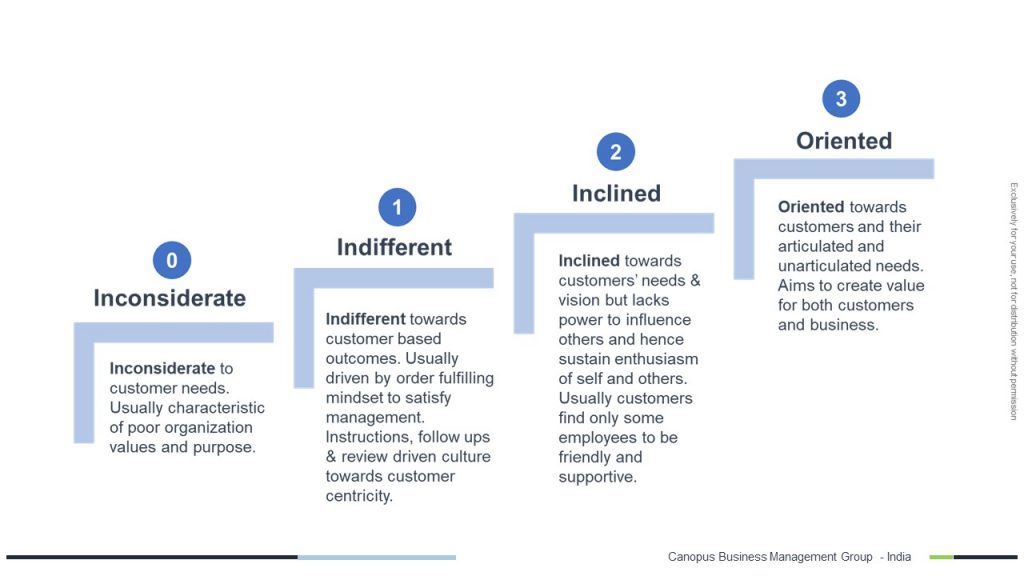
In a client-centric business growth strategy, effective meetings are indispensable. They ensure that client needs, expectations, and feedback are clearly communicated and understood. By structuring meetings to be concise, goal-oriented, and inclusive, businesses can foster stronger client relationships and trust. Effective meetings not only align internal teams with client objectives but also enable proactive problem-solving and innovation. Regular, transparent communication through well-executed meetings demonstrates commitment to client satisfaction and helps in building long-term partnerships. Ultimately, the effectiveness of these meetings is reflected in the overall growth and success of the client-centric business.
#nilakantasrinivasan-j #canopus-business-management-group #B2B-client-centric-growth

Unlocking growth and building meaningful connections are two powerful pursuits that often go hand-in-hand. When we seek personal and professional growth, we inevitably encounter opportunities to connect with others in meaningful ways. By fostering genuine relationships, we create a network of support and collaboration that propels us forward. This synergy of shared experiences and mutual encouragement nurtures both individual development and collective success. Embracing a mindset of growth and connection creates a ripple effect of positive change.
#nilakantasrinivasan-j #canopus-business-management-group #B2B-client-centric-growth #James-Cash-Penney
Find how you often go wrong in Client Relationship Management & download Leader’s check sheet
The fall of Byju’s, once hailed as India’s ed-tech unicorn, started with its rapid expansion during the COVID-19 pandemic, which led to cash-flow problems. Now, everyone says the company overestimated its ability to manage such rapid growth without fully understanding the risks. But a few years ago, they were regarded as the daredevils of unicorns.
Putting aside the issues of financial mismanagement and other aspects, I wish to emphasize an underlying psychological phenomenon: a cognitive bias called the Dunning-Kruger Effect.
Byju’s is not alone in this game. According to the IBM Institute for Business Value and Oxford Economics, around 90% of Indian startups fail within the first five years.
And it’s not just startups. Google’s recent streak of mediocre performance, including Gemini, and even AstraZeneca’s withdrawal of Covid vaccines are signs of the Dunning-Kruger Effect. So what is this phenomenon?
Dunning-Kruger Effect

It refers to a cognitive bias where people with low ability in a particular area tend to overestimate their competence, while those with high ability may underestimate their competence.
Psychologists Dunning and Kruger discovered this phenomenon in 1999. It stems from the inability to objectively recognize one’s own incompetence.
It is quite common to see kids overestimate their ability to achieve a goal. And it’s not just kids; even politicians often fall into this trap. With as many as 64 countries in the world having elections in 2024, it’s something to watch out for.
In this world of opportunities, thinking big and taking risks are considered success mantras. Professionals are bombarded with data, opinions, and expertise that often lead to overconfidence, where individuals assume they know more than they actually do. Social media platforms and influencers amplify self-assuredness.
And then, professionals often feel pressure to project confidence. Admitting ignorance or seeking help may be perceived as weakness, leading to overestimation of abilities.
Another significant problem is assuming skills in one area automatically translate to expertise in another.
In essence, it is not easy for professionals in today’s world to objectively assess their competence or that of their organization’s.
So, in today’s world, it’s unavoidable to be Dunning-Kruger biased 🙂
11 Dunning-Kruger Effect Traps in Client Relationship Management
When it comes to my forte, Client Relationship Management and Client Centric Business Growth, here are a few pitfalls to watch out for:
- Over-promising to clients: Making commitments that exceed the organization’s capabilities or resources can lead to dissatisfaction and erode trust with clients. Sometimes this is done in mere impulse.
- Creating unrealistic and aggressive plans: Setting overly ambitious targets or timelines without considering potential challenges or constraints can result in missed goals and disappointment for both the organization and its clients.
- Selling a grandeur vision: Like real estate agents, you can sell the future state, assuming everything will fall into place at the right time, but it need not, and that can become a significant disappointment in client relationships.
- Setting unrealistic targets for the team: Unrealistic targets can lead to stress, burnout, and a focus on short-term results over long-term client satisfaction.
- Making too many assumptions: Assuming without sufficient evidence can lead to misunderstandings and misaligned expectations with clients.
- Multitasking: Attempting to juggle multiple tasks simultaneously can lead to decreased focus, reduced quality of work, and increased chances of errors.
- Assuming the client already trusts you enough: Trust is earned through consistent actions and transparent communication over time. Assuming trust merely because you got the contract, particularly without actively cultivating it, can lead to complacency and neglect of the client relationship.
- Overestimating the team’s capabilities: Overconfidence in the team’s abilities can lead to taking on projects beyond their capacity, resulting in delays, quality issues, or failure to deliver on promises.
- Underestimating competition: Ignoring or underestimating competitors can result in missed opportunities and a failure to differentiate the organization’s offerings effectively. It’s important to conduct regular competitive analysis and stay informed about industry trends to remain competitive in the marketplace.
- Oversimplification of the situation at hand: Complex client issues require thorough analysis and thoughtful consideration. Oversimplifying problems can lead to superficial solutions that fail to address underlying challenges effectively.
- Overly relying on outsourcing: While outsourcing can provide valuable expertise and resources, relying too heavily on external partners can lead to a loss of control over quality and communication
As a leader, you can go wrong in Client Relationship Management and fall for the Dunning-Kruger Effect.
Download Client Centric Decision Making Checklist and avoid Dunning-Kruger Traps
#nilakantasrinivasan-j #canopus-business-management-group #B2B-client-centric-growth
And how can you ensure they are happy while you are successful?

Making clients happy and satisfied is not easy.
In B2B, it’s not merely ensuring on-time deliveries and meeting quality standards that lead to loyalty.
Some argue that it often involves effective communication, meeting or exceeding expectations, being responsive to their needs, and demonstrating a genuine commitment to delivering quality work.
In complex B2B value chains, clients expect you to lead or support a larger change in their organization and participate in shaping their future. For example, it might involve you to educate their employees to use your products correctly, to help them drive adoption of a new workflow application or to implement an improved process.
“They are looking for a comrade not a mercenary.“
Yet on some other occasions, you wish to change certain behaviors of your client employees for the larger good though it may not be actively supported by the client.
Your failure in driving such changes leads to greater and wider dissatisfaction. I mean it reaches the ears of key stakeholders and decision makers.
It can be disheartening when clients are unhappy despite putting in good work.
Why do you think this happens?
How can you ensure clients are happy while you are successful?
Take 3 mins to check out this video:
Are you a B2B leader who is unsure about how to achieve SUSTAINABLE business growth and do you want to have predictable and consistent growth in your organization?
Then take this quick self-assessment diagnostic and you will have an idea of what your priorities should be.
#nilakantasrinivasan-j #canopus-business-management-group #B2B-client-centric-growth

Sustaining client centricity can be difficult for a number of reasons, including:
- Resistance to change: Implementing a client-centric approach may require changes to existing processes and ways of doing things, which can be met with resistance from employees who are comfortable with the status quo.
- Lack of understanding: Without proper training and education, employees may not fully understand the benefits of a client-centric approach or how to implement it effectively.
- Limited resources: A client-centric approach may require additional resources, such as increased staff or technology, which may not be available.
- Lack of accountability: Without clear accountability and oversight, it can be difficult to ensure that a client-centric approach is being implemented and maintained.
- Difficulty in Measuring Success: Without clear metrics to measure the success of a client-centric approach, it can be difficult to evaluate its effectiveness and make adjustments as needed.
#nilakantasrinivasan-j #canopus-business-management-group #B2B-client-centric-growth #Client-centricity

Agile enterprises are customer centric because they prioritize the needs and goals of their customers in all aspects of their business. Agile methodologies, such as Scrum and Kanban, are designed to be flexible and responsive to change, which allows organizations to quickly adapt to the evolving needs of their customers.
In an agile enterprise, customer feedback is actively sought and incorporated into product development and decision-making processes. This allows the enterprise to continuously improve and deliver products and services that align with customer needs.
Additionally, Agile enterprises also tend to have a flat organizational structure, which allows for better communication and collaboration across teams and departments, enabling them to respond more quickly to customer needs. They also tend to use cross-functional teams, which are composed of individuals from different areas of the business, such as design, development, and marketing, to work together to deliver products and services that meet customer needs.
In summary, Agile enterprises are customer centric because they prioritize the needs of their customers, actively incorporate customer feedback, and continuously improve their products and services to meet those needs.
One example of how agility helped in client centricity is the case study of a large retail bank that implemented an Agile approach to managing their customer service operations.
The bank was facing a significant challenge in maintaining high levels of customer satisfaction, as their traditional, hierarchical structure was causing delays in responding to customer complaints and requests. Additionally, the bank was facing increased competition from fintech companies that were more agile and able to respond quickly to changing customer needs.
To address these issues, the bank decided to adopt an Agile approach to managing their customer service operations. They formed cross-functional teams composed of representatives from different areas of the business, such as customer service, IT, and compliance, and implemented daily stand-up meetings to ensure that everyone was aware of the most pressing customer issues.
The bank also began actively seeking customer feedback and incorporating it into their decision-making processes. They also implemented a system for tracking customer complaints and requests in real-time, which allowed them to quickly address and resolve issues.
As a result of these changes, the bank was able to significantly improve their customer satisfaction levels and reduce their customer complaint resolution time. The agility helped them respond to the changing customer needs in a timely manner. Additionally, the bank was also able to reduce costs and improve overall efficiency, which helped them better compete with fintech companies.
This case study shows how agility helped in client centricity by allowing the bank to respond more quickly to customer needs, improve customer satisfaction, and ultimately increase competitiveness.
One example of agile client centricity in a startup is the case study of a small software development company that specializes in building custom mobile apps for small businesses.
The company had struggled to retain clients in the past because they were not able to deliver products that met the unique needs of each business. The company decided to adopt an Agile approach to software development, which allowed them to be more flexible and responsive to the evolving needs of their clients.
The company began using Scrum, an Agile methodology, to manage their software development projects. They formed small, cross-functional teams composed of developers, designers, and project managers, and held daily stand-up meetings to ensure that everyone was aware of the most pressing client needs.
The company also began actively seeking client feedback and incorporating it into their development process. They implemented a system for tracking client requests and issues in real-time, which allowed them to quickly address and resolve problems.
As a result of these changes, the company was able to significantly improve their client retention rate. Clients were happy with the product as it met their needs and the company was able to deliver the product on time and on budget. Additionally, the company was able to reduce costs and improve overall efficiency, which helped them to better compete with larger software development companies.
This case study shows how agility helped in client centricity by allowing the company to respond more quickly to client needs, improve client satisfaction and ultimately increase competitiveness.
Here are a few simple ways to start incorporating Agile principles in a non-software environment:
- Start with small, cross-functional teams: Form teams that include representatives from different areas of the business, such as sales, marketing, and operations. This will ensure that everyone is aware of the most pressing customer needs and can work together to deliver solutions.
- Hold regular meetings: Hold daily or weekly meetings to discuss progress, identify any roadblocks, and ensure that everyone is on the same page.
- Prioritize customer feedback: Actively seek and incorporate customer feedback into decision-making processes. This will help ensure that products and services align with customer needs.
- Emphasize flexibility and adaptability: Be open to change and willing to pivot when necessary. Agile is all about being able to respond quickly to changing circumstances.
- Use visual management tools: Use visual tools, such as Kanban boards or task lists, to track progress and identify areas for improvement.
- Encourage collaboration and communication: Encourage open communication and collaboration across teams and departments.
- Test and Iterate: Continuously test and improve the process, gather feedback, and iterate.
It is important to note that Agile is a mindset and a set of principles, not a one size fit all methodology. Therefore, it’s important to tailor the approach to the specific needs of the organization and its environment.
#nilakantasrinivasan-j #canopus-business-management-group #B2B-client-centric-growth #Agile #Customer-centric

Behavioral and cultural maturity on Customer Centricity with maturity grid..
An unique attitude based organizational evaluation is used to understand behavioral and cultural maturity and can provide insights on where and what kind of attention is needed from leadership to improve Customer Centricity. Instead of dispersed efforts, they can take focused actions.
An overall maturity rating for the organization or cohort of employees will quantitatively assess current state.
A maturity grid below can give relative position and also provide a benchmark.
Customer Centricity Maturity Levels

To arrive at this maturity level:
- Customer Centricity of an organization across 8 dimensions is assessed and outcome will be an overall Customer Centricity Score against 4 maturity levels.
- Unlike traditional assessments, in this survey participants’ attitude is evaluated by giving them 8 random scenarios and they have to select what they will do or feel in each of the situation. This way, it eliminates respondent bias.
- Outcome is compiled in an interactive Customer Centricity report – a dashboard
Access Customer Centricity Maturity Interactive Dashboard here

For organizations of employee headcount (20 – 80) this Customer Centricity Evaluation is free.
#nilakantasrinivasan-j #canopus-business-management-group #B2B-client-centric-growth #Customer-Centricity-Evaluation
Canopus Customer Centricity in an organizational assessment to understand behavioral and cultural maturity of organization.
- It is a measure of Customer Centricity of organization across 8 dimensions using 4 maturity levels.
- Unlike traditional assessments, in this survey participants are given with 8 random scenarios and they have to select what they will do or feel in each of the situation. This way, it eliminates respondent bias.
Canopus Customer Centricity Maturity Levels are below:

- Use Chrome Browser for viewing
- Start from Welcome Page of report
- Use full screen
- Navigate across pages
- Use drop down to slice & dice the data to your convenience

While organizations like Disney and Ritz-Carlton have the luxury to hire front line staff based on Emotional Quotient (EQ), you will agree that not all of us have that levy. More importantly, in some sectors we have to weigh other skills such as technical, financial, engineering, software than EQ during hiring. For example, in product service, B2B front line, IT solutioning, etc., it is not a pragmatic aspiration to expect employees to possess high EQ & technical know-how.
Over the years, employees have understood the importance of customer centricity. So everyone wants to be customer centric but the question really is, how? Are the specific pointers that CXOs & HODs can give to their team on what to do? Motivating & inspiring them to do so is just as good as cranking the engine. What about throttling and shifting gears?
Unfortunately, there are very few leaders who go that far. If you want your employees to emulate certain behavior everytime-everyday, you have to be very specific and take a prescriptive approach.
Here are the 8 super simple behaviors that you can demonstrate every day, in meetings, field visits, reviews, planning, brainstorming sessions, or even when you scroll down a spreadsheet. Every customer facing employee (rather every employee) can be encouraged to imbibe these practices to become customer centric that will facilitate value generation for customers & business.
We will start with the simplest and go down to the difficult ones.
- Consistently deliver on promises: This is the simplest way to build trust and usually doesn’t cost much. And promises, whether big or small, are what we voluntarily make! So, it’s pretty much in our control.
- Permanent Issue Resolution: Whatever technology and processes we put in place, problems do crop up, every now and then. These issues are irritants for customers. Imagine, how many different products and services he/she uses. If we learn to go to the root of the customer issue and fix it permanently, we are not only helping this customer, but proactively preventing many such issues. This is when we can devote our energies towards constructive strategies.
- Collaborate together to fix customer issues: Organizations have become complex systems and authority is largely decentralized. Unless we collaborate internally and externally with all stakeholders, we will never put up a good show in front of customers.
- Listening to customers and understanding their needs: While it sounds very simple, it’s important to recognize every customer is unique. Furthermore, needs and requirements are very different. And lest, we have time to listen.
- Look for ways to make things better for our customers: Unearthing the unarticulated needs of customers pushes it by one more notch. Real and productive innovation starts here.
- Going out of way to help customers: We are trained to follow rules, processes and policies. Many a time, the biggest hindrance to customer centricity are none but these factors. The courage to challenge and break them when the situation really warrants is not short of heroism in Customer Centricity.
- Keep customers at the heart of our decisions: We are in business and not in charity, but when it comes to day to day decisions, do we weigh customers equally as business?
- Serve with Passion: While the first 6 points hinged on skill & action, the last two are about will. Conviction is born at the bottom of the heart.
If you wish to learn more about these 8 behaviors or how to create buzz around customer centricity in your organization, happy to be of help any time.
#nilakantasrinivasan-j #canopus-business-management-group #B2B-client-centric-growth #Customer-Centricity
Sign-up for collaborat newsletter

